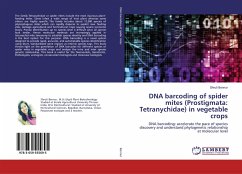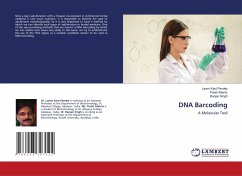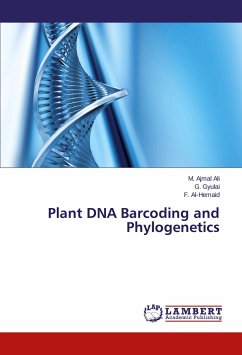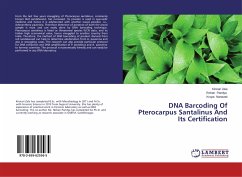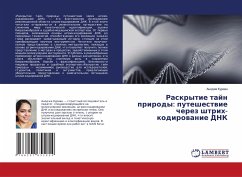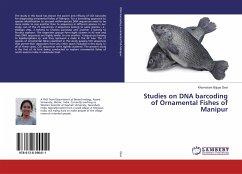
Studies on DNA barcoding of Ornamental Fishes of Manipur
Versandkostenfrei!
Versandfertig in 6-10 Tagen
37,99 €
inkl. MwSt.

PAYBACK Punkte
19 °P sammeln!
The study in this book has shown the power and efficacy of COI barcodes for diagnosing ornamental fishes of Manipur. For a barcoding approach to species identification to succeed within-species DNA sequences need to be more similar to one another than to sequences in different species. In our study, out of the 27 sequences, 2 sequences belong to same species, i.e., Wallago attu, 2 belong to Channa punctata and another 2 belong to Puntius sophore. The respective groups form tight clusters in NJ tree and their DNA sequences are highly similar to one another. 4 sequences belong to lepidocephalus ...
The study in this book has shown the power and efficacy of COI barcodes for diagnosing ornamental fishes of Manipur. For a barcoding approach to species identification to succeed within-species DNA sequences need to be more similar to one another than to sequences in different species. In our study, out of the 27 sequences, 2 sequences belong to same species, i.e., Wallago attu, 2 belong to Channa punctata and another 2 belong to Puntius sophore. The respective groups form tight clusters in NJ tree and their DNA sequences are highly similar to one another. 4 sequences belong to lepidocephalus sp. and they represent a clade in the NJ tree. The 21 species of ornamental fishes examined in this study possess COI sequences that permit their separation from any other taxon included in this study. In all of these cases, COI sequences were tightly clustered. The present study is the first of its kind being conducted to explore ornamental fishes of north eastern India in molecular level.



